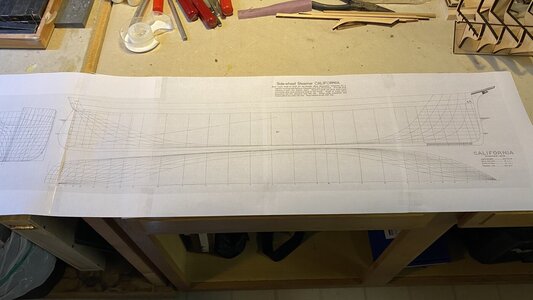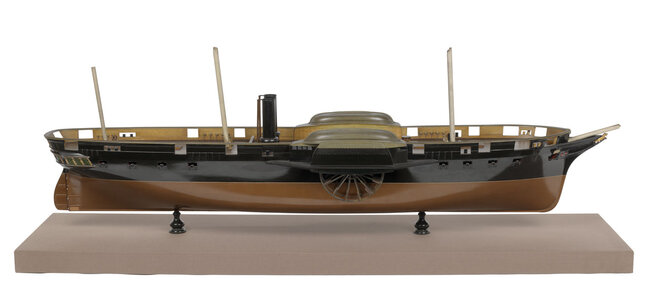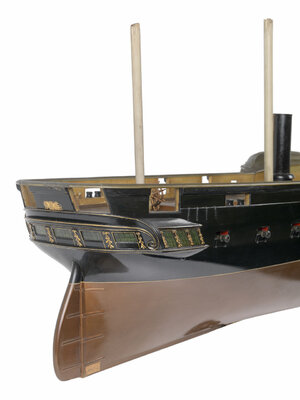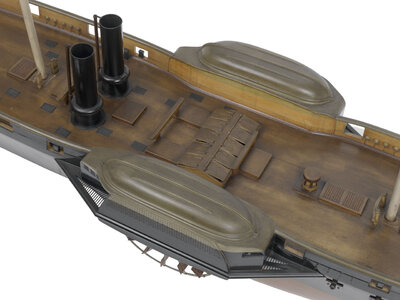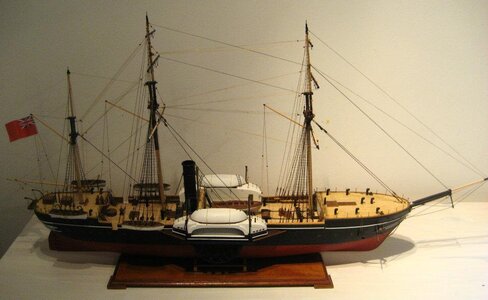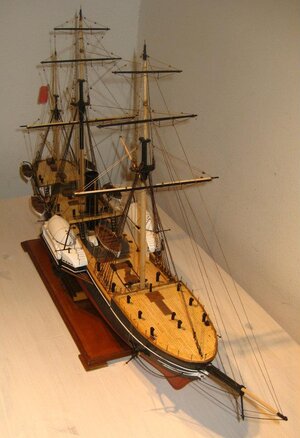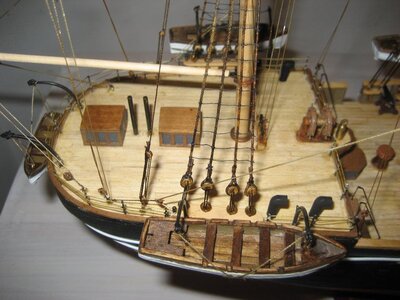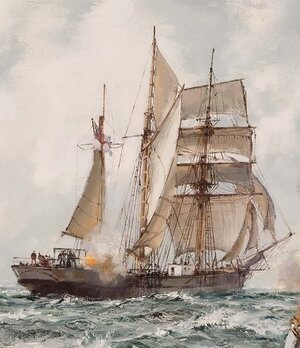- Joined
- Sep 12, 2021
- Messages
- 101
- Points
- 78

About ten years ago my youngest son wrote a ballad about the tragedy of the HMS Birkenhead recounting the gallantry and chivalry of Lt Col Seton and men of the 74th Foot Regiment. At that time I promised to do a painting for him of that event, but I had committed to do some other paintings for his brothers before that. He has waited patiently all these years and it’s time to get going.
So to have something to draw and paint from I’m building a model.
The HMS Birkenhead started out as the Vulcan. Before it was launched, however, the name was changed to Birkenhead, evidently in honor of all of the workers who built her at Johnathan Laird’s shipyard in Birkenhead. Originally she was conceived as a two masted Barque rig, with an iron hull and side paddle wheels, to Mr Laird’s displeasure the Admiralty directed the paddle wheels moved further forward, which Mr Laird said would cause her to trim by the bow. Nonetheless that is how she was built. Later a third mast was added making her a barquentine rig. While originally conceived as a frigate, she was commissioned as a troop ship. This was due to the Admiralty conducting tests of shells against iron hulls. At lower velocities jagged shell holes would result that would be nearly impossible to plug. This later proved to be the Birkenhead’s undoing as she struck a hidden jagged rock formation off Danger Point in February 1852. When she was converted to a troopship a poop and forecastle were added.
Apparently there are no technical drawings or hull models of the ship, although a number of paintings and drawings exist.
Uwek found a half hull model of what was apparently the ship built by Laird right after the Birkenhead that was named the HMS Vulcan. It was slightly longer and wider. Given the similarities between this ship and the drawings and descriptions of the Birkenhead this is probably very close. So I begin my research and will start drawing some plans and trying to figure out the best way to build this model.
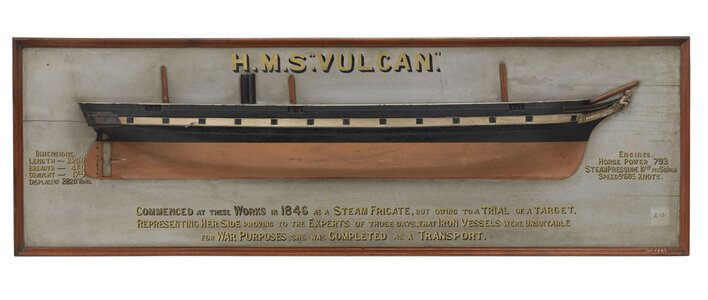
So to have something to draw and paint from I’m building a model.
The HMS Birkenhead started out as the Vulcan. Before it was launched, however, the name was changed to Birkenhead, evidently in honor of all of the workers who built her at Johnathan Laird’s shipyard in Birkenhead. Originally she was conceived as a two masted Barque rig, with an iron hull and side paddle wheels, to Mr Laird’s displeasure the Admiralty directed the paddle wheels moved further forward, which Mr Laird said would cause her to trim by the bow. Nonetheless that is how she was built. Later a third mast was added making her a barquentine rig. While originally conceived as a frigate, she was commissioned as a troop ship. This was due to the Admiralty conducting tests of shells against iron hulls. At lower velocities jagged shell holes would result that would be nearly impossible to plug. This later proved to be the Birkenhead’s undoing as she struck a hidden jagged rock formation off Danger Point in February 1852. When she was converted to a troopship a poop and forecastle were added.
Apparently there are no technical drawings or hull models of the ship, although a number of paintings and drawings exist.
Uwek found a half hull model of what was apparently the ship built by Laird right after the Birkenhead that was named the HMS Vulcan. It was slightly longer and wider. Given the similarities between this ship and the drawings and descriptions of the Birkenhead this is probably very close. So I begin my research and will start drawing some plans and trying to figure out the best way to build this model.



